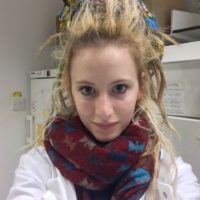About me
I graduated with an Mbiochem. from the University of Oxford where I completed three years broad biochemistry before choosing a practical Masters project with Professor John Vakonakis. Here, I used crystallography and biophysics to study malaria – host interactions. This secured my interest in both infectious disease and structural biology which was echoed in my fourth year course options: Advanced Structural Biology and Virology. On graduating I secured a position as a Research Technician at the Section Of Structural Biology, Imperial College London with Professor Zhang, studying the DNA damage response. In this post I honed skills in protein production and became excited by the exploding field of Cryo-electron microscopy. This prepared me for my PhD at the University of York, utilising Cryo-EM to study DNA packaging motors of viruses. The project also appealed to my deep fascination in virology and the therapeutic potential offered by structural understanding. Last year my entry was short listed for for the international “Dance Your Ph.D.” contest sponsored by AAAS and Science.
My project
HK97 is a double stranded DNA bacteriophage which infects E.coli. This virus displays an icosahedral capsid and utilises a DNA packaging machinery resembling three stacked oligomeric protein rings. The portal protein acts as a door into the procapsid, the large terminase acts as the motor and small terminase is required for DNA recognition and regulation . DNA packaging is highly conserved with Herpesviridae viruses where the it represents a strong drug target. To date there is no high resolution structure of the complete motor.
The long term aim of my PhD is to solve the structure of the stalled DNA packaging machinery of HK97 using Cryo-Electron microscopy. This project will require protein production of each of the packaging components and the use of DNA protection assays to discover how to “fix” the motor in place. I will then need to optimise conditions for Cryo-Electron microscopy. Data processing will require much worktdue to to the large size of the virus and the considerable symmetry mismatch between the three stacked oligomeric rings of the motor with 12, 5 and 9 subunits respectively.
In a secondary project I will be expressing large terminase from human Cytomegalovirus which I also hope to model using Cryo-Electron Microscopy . This protein, UL56, is already the target of a newly licensed antiviral Letermovir which has shown huge therapeutic potential. It requires expression in insect cells.
Connect
Not yet available.

